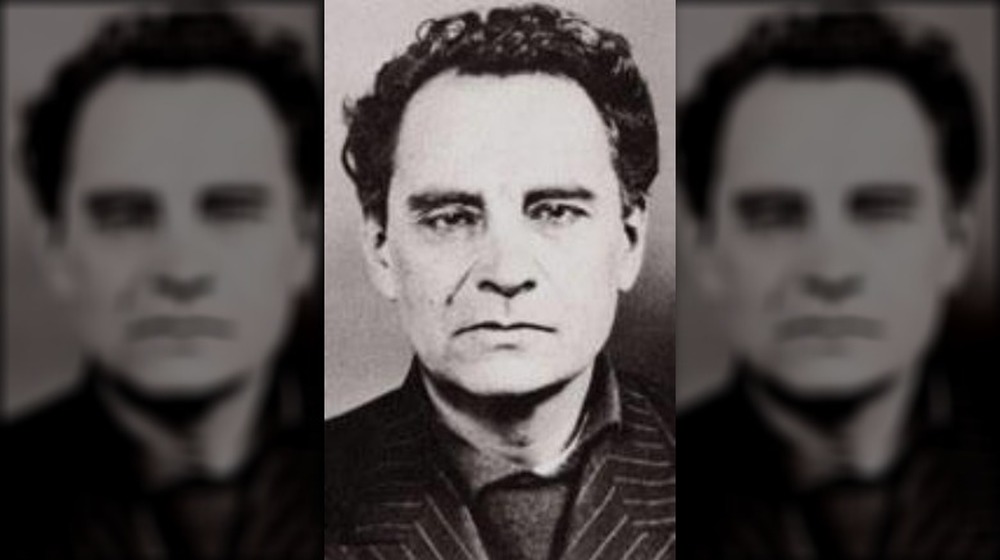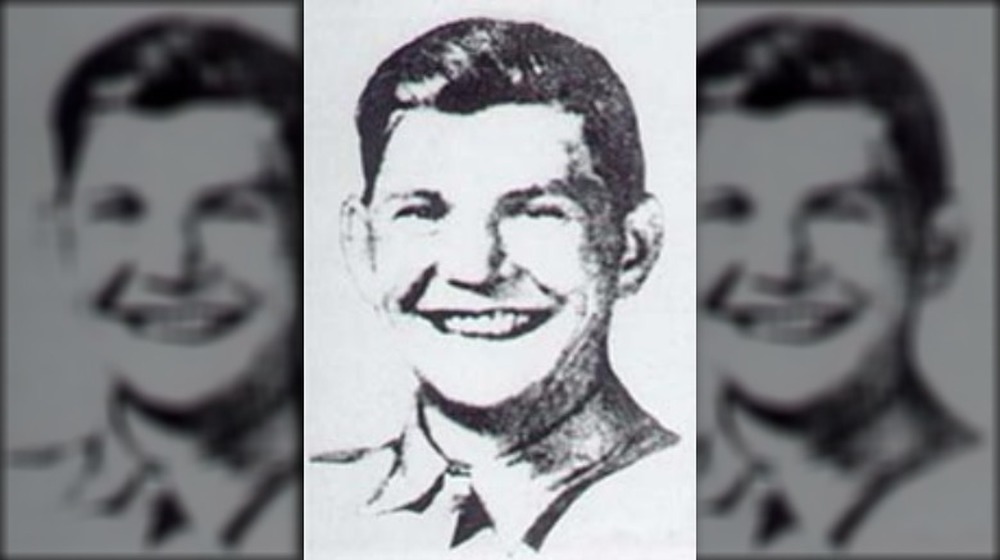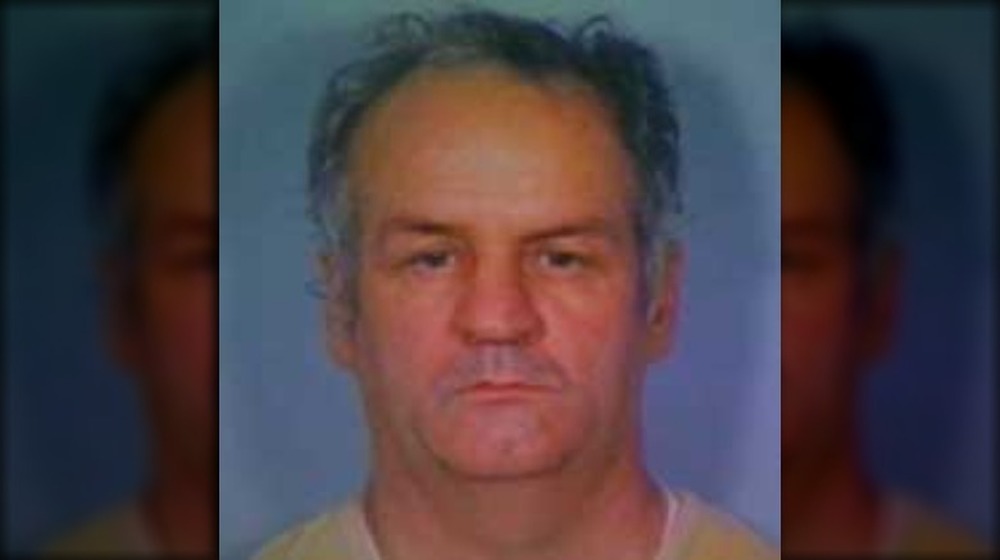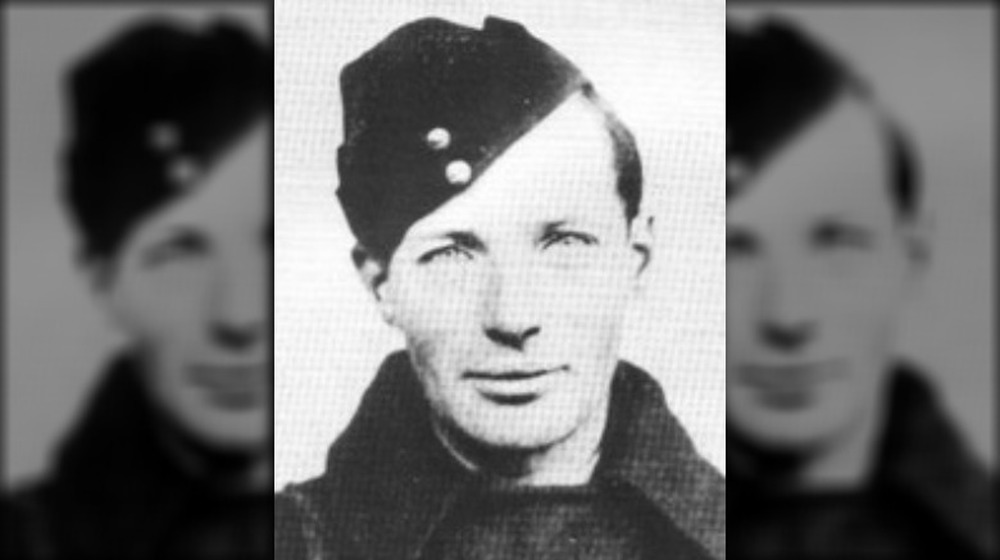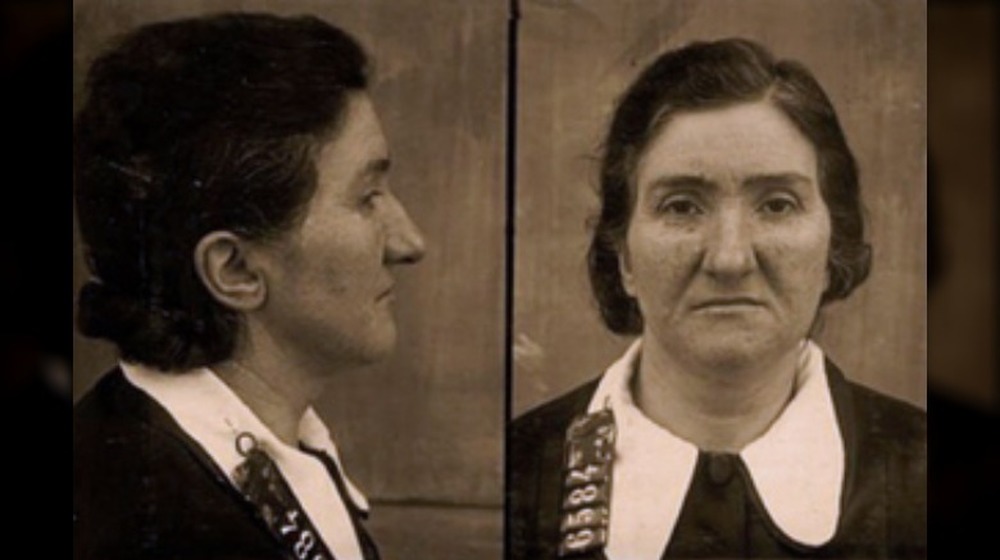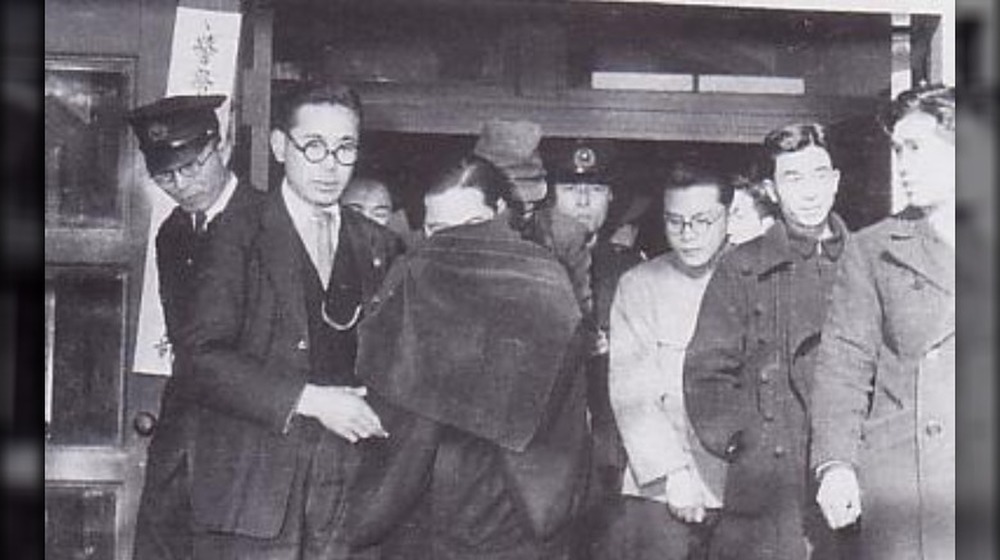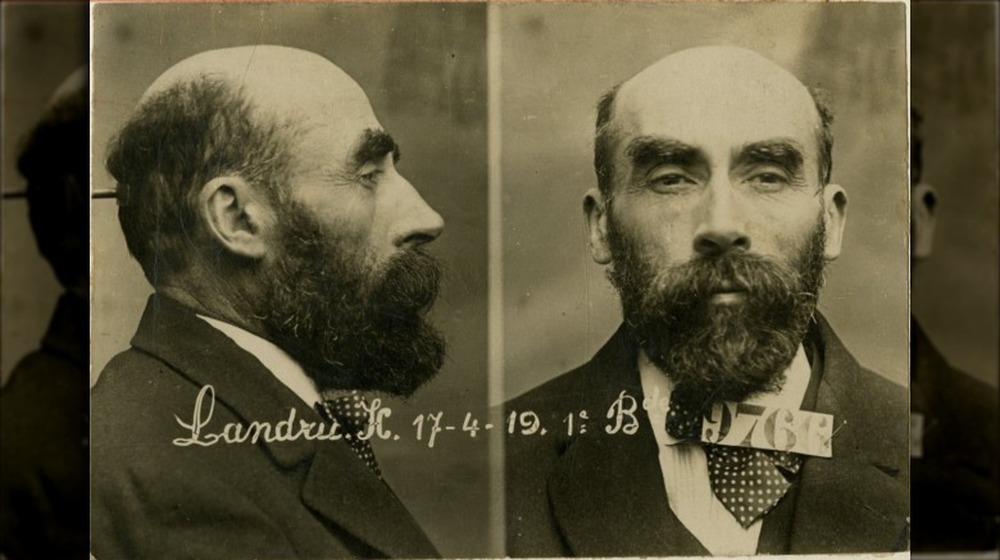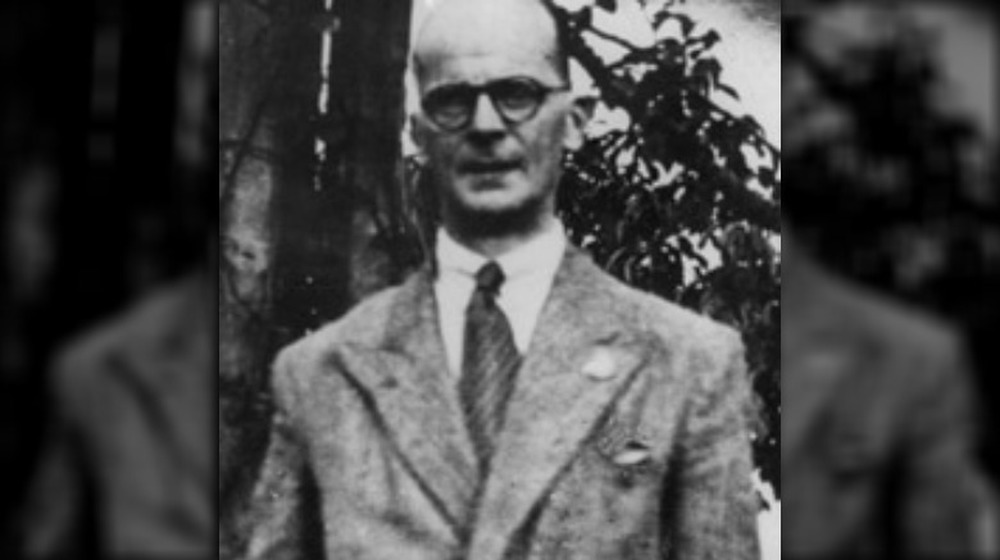Serial Killers Who Hunted Under The Cover Of War
It's often said that war is hell, and it turns out that it provides the perfect cover for doing something just as awful — committing serial murders.
For a handful of serial killers, the chaos and distractions of war provided perfect cover for killing not in the name of cause or country but for thrills. And that's terrifying — imagine living in the middle of World War II, wondering when you and your loved ones will get drafted, wondering who will come back, wondering how food was going to make it to the table... then hearing rumors of a killer stalking the night.
And it absolutely did happen. Take, for example, the blackouts. In major cities across the world, blackouts were enforced as nighttime lights became a threat — and increased the ease with which enemy bombers could hone in on cities. Not only did the power and the lights go out, but in that darkness — on both the Allied and Axis sides — serial killers took advantage of those blackouts to prowl the streets.
Let's shine a spotlight on those killers — and others — who hunted under the cover of war.
Paul Ogorzow: The S-Bahn Murderer
The S-Bahn is a railway system that runs through Berlin, and during the very darkest times of World War II — literally — it was the dumping ground of a serial killer who stalked the city during the blackouts designed to foil Allied bombers.
The first bodies were discovered in late 1940, and the killing continued. Multiple victims were thrown from moving trains, most had fractured skulls, and bore signs of assault. As more victims were identified, BBC Collections says (via Issuu) that Berlin police knew they were dealing with a single killer.
They suspected a railway worker, but finding the killer was a bit like finding a needle in a haystack... of more than 5,000 employees. By the time the last victim was discovered in July of 1941, one name was standing out — Paul Ogorzow. Coworkers regularly called him misogynistic, and half of the killer's eight victims were found within a mile of his home. Ogorzow was ultimately arrested, and after confessing to the murders, he was executed via the guillotine.
In hindsight, it seems like he should have been caught well before his eighth victim, but Ogorzow hunted under the cover of blackouts and used the darkness to escape police pursuit at least once. Also, the possibility of a German serial killer wasn't even on police radar for a long time. Instead, they investigated foreign laborers, Jewish locals, and the possibility of British agents in the area.
Marcel Petiot: Dr. Satan
Ted Bundy definitely didn't invent the idea of the charming, charismatic serial killer. Take Marcel Petiot. Historian and author David King — who wrote Death in the City of Light based on Petiot's story — described him this way (via Reuters) — "Here's a guy ... Obviously very intelligent, charismatic, has a respected position, is into collecting antiques, interested in the arts. ... [He] seemed like the nicest guy..."
It took King years of research to piece together Petiot's story, and here's the basics. It started with occupied Paris and a huge number of people who wanted nothing more than to get out from the Nazi bootheel. Petiot — who was an established Parisian doctor — sought out people wanting to flee and told them he was a member of France's underground resistance.
Once he lured his victims into his home with promises of helping them to freedom, he had them write letters to loved ones saying that they were escaping and absolutely fine. Then, he gave them an injection that he claimed was a vaccine but definitely wasn't. Bodies were then dismembered, incinerated, and spread in the courtyard of one of his homes.
It's not known how many people he killed, and although the official count is 27, it's believed it's closer to 150. Petiot was eventually captured after his house caught on fire and police discovered the remnants of some of his victims. He was found guilty and executed.
Eddie Leonski: The Brownout Strangler
When women started turning up dead the morning after brownouts — which were sort of like other blackouts of WWII but less severe — in Melbourne, Australia, it wasn't long before witnesses came forward claiming to have seen the women with an American GI. Historian Bart Ziino of Deakin University says (via Ozy), "There was a sense it had to be an American serviceman, if only for the comfort that it couldn't be one of us."
The witnesses were right. After Britain refused to reinforce and protect Australia from the fighting in the Pacific, President Franklin D. Roosevelt did. Along with the 250,000 troops came Pvt. Eddie Leonski, a New Jersey native with a personal (and family) history of violence, substance abuse, and mental illness, says The Guardian. Those he served with knew him as an angry drunk who craved attention, and his ways didn't change in Australia.
After the third body was discovered strangled and in various states of undress, it didn't take long for Leonski's reputation to make him a person of interest. He confessed, saying that he had done it to stop the voices. "She was singing in my ear," he told police. "It sounded as if she was singing for me. I grabbed her. She stopped singing."
Leonski went through the United States military's court martial system, was found guilty, and hanged after his request for an appeal was denied.
Rudolf Pleil: The Deadmaker
The Center for European Studies says that by 1946, German citizens were left separated by a demarcation line guarded by American, Soviet, French, or British troops. Families were separated and unsurprisingly, they wanted their loved ones back.
Enter Rudolf Pleil and a promise that he could get lone family members across the border to rejoin their loved ones. Das Erste says his method of killing played out over and over again, just like it did with Gertrud Glode. The 44-year-old widow wanted to go east, so she could get her paperwork in order and start a new life with what remained of her family. She hired Pleil and never made it back.
Pleil acted as a border guide, but instead of seeing his charges across the border, he took them out into a secluded area, assaulted them, and killed them. Even though he was stopped by border patrols numerous times, he was repeatedly let go... until 1947. That's when an axe discovered alongside the dismembered body of a German merchant was identified as belonging to Pleil, and it wasn't long before he was arrested and ultimately confessed to 26 murders. Sentenced to life in prison, Pleil committed suicide in 1958 — still behind bars. And what about Glode? Her body was recovered from the bottom of a well, not a mile and a half from her home — where her daughter continued to wait for her.
Arthur Shawcross: The Monster of the Rivers
Arthur Shawcross had about as many names as he had victims — he was known as the Genesee River Killer, the Rochester Strangler, and the Monster of the Rivers. They were accurate. According to ThoughtCo., Shawcross was ultimately linked to 14 murders in the area of Rochester, N.Y. The worst part? Most could have all been avoided.
Shawcross killed two children in 1972, and in 1987 he was released on parole (for "good behavior) and killed at least 11 more.
That's awful, but where does the wartime killing come in? Peter Vronsky, an author and expert researcher on serial killers, says (via Oxygen) that part of the reason he was paroled in the first place was because he claimed to be suffering from PTSD. He served time in the Vietnam War and claimed that the trauma he'd experienced there was one of the root causes of his later killing sprees.
Shawcross — who also cannibalized several of his victims — claimed he had not only started killing in Vietnam, but also that it's where he started to get a taste for human flesh. Just what happened to Shawcross in Vietnam hasn't been proven (records suggest he was in a non-combat role during his deployment), but it was convincing enough to get him back on the streets. He was convicted again in 1990 and died in prison in 2008 (via NBC News).
Gordon Cummins: The Blackout Ripper
In 1942, living in London was terrifying stuff. There were the regular bombings and the blackouts, and in early February, those blackouts brought something else — the horrifying deaths of four women, killed in a single week and left savagely mutilated in a way reminiscent of Jack the Ripper.
The killing started on February 9, with the death of Evelyn Hamilton. Fingerprints — on a bloody can opener — were then found alongside the body of Evelyn Oatley, discovered the next day. Margaret Florence Lowe was killed the day after that, then Doris Jouannet. According to the Old Police Cells Museum, it was then that the press started leaning heavily on the "Blackout Ripper" angle, and it didn't stop him.
He attacked two more women who were able to fight him off and give law enforcement two things — a gas mask with a serial number and the belt from his uniform. That led investigators straight to Gordon Frederick Cummins, a member of the RAF ground crew who had recently been transferred to London for more training as an airman. He was arrested on February 16, and the jury took 35 minutes to bring back a guilty verdict. He was hanged in June of the same year.
Bruno Ludke: Mass murderer... or Nazi victim?
First, the story that was told for ages. It started in 1943, when Welt says the naked body of a 51-year-old woman who had been assaulted and strangled was discovered. Suspicion fell on a man from the nearby village of Kopenick, and during interrogation, Bruno Ludke admitted to having not only killed Frieda Rosner but to many more.
Ludke — who had severe mental disabilities stemming from a childhood fall — was found guilty of 53 of those murders (and another three attempted murders). He wasn't sent to jail, though. Under the direction of Heinrich Himmler, he was sent to the Central Medical Institute of the Security Police and subjected to numerous Nazi-run experiments. He died there the following year.
For decades, Ludke has been called one of Germany's worst serial killers... but now, that's highly doubted. Not only has new research determined that it was impossible for him to have committed the murders, but that Ludke — who had already been forcibly sterilized under the so-called Law for the Prevention of Hereditary Offspring — had been goaded into his confession by a detective who fed him names, places, and dates, then asked him to say he'd done it.
Why? Historian Axel Dossmann says that his case was meant to support Nazi ideals about the ultimate extermination of a portion of the population. "This would have made it legal to persecute and murder all maladjusted Germans."
Leonarda Cianciulli: The Soap-maker of Correggio
According to the Museo Criminologico, Leonarda Cianciulli had already lost 13 children to either miscarriage or childhood deaths. Four survived, and when son Giuseppe was drafted into the Italian army in 1939, it seemed like just one more step toward fulfilling the prophecy an old woman had told her years before — she would live to see all her children die.
Cianciulli became convinced that if she offered a sacrifice, the powers-that-be would be content with that life and spare her son's. So, that's what she did. Over the course of two years, she drugged and killed three middle-aged women from her village, but it gets even more gruesome than that.
According to the BBC, Cianciulli wrote extensively on how she disposed of the bodies. Faustina Setti, Francesca Soavi, and Virginia Cacioppo were dismembered and butchered — at least some of the blood was collected, dried, turned into cakes, then served to friends and family. She kept the fat as well, writing, "When it had melted, I added a bottle of cologne, and after a long time on the boil I was able to make some most acceptable creamy soap. I gave bars to neighbors and acquaintances. That woman was really sweet."
She was captured when the sister-in-law of her last victim went to authorities, and confessed immediately. She was given a 30-year sentence, and died in an asylum in 1970.
Miyuki Ishikawa: The Murderous Midwife
Japan's post-war years weren't easy ones, and after their 1945 surrender, Cultura Colectiva says that the country descended into a period of social and economic uncertainty. In the midst of that, birth rates were on the rise — and into that uncertain baby boom appeared a midwife named Miyuki Ishikawa.
Absolute Crime says that by the end of the war, she was the director of the maternity ward at Kotobuki. There, she became known as the person for parents to go to if they knew they couldn't care for their newborn baby — just tell her, and she'll make sure the child was taken care of.
Literally. With the help of her husband, Dr. Shiro Nakayama, she arranged for the deaths of up to 169 newborn babies that had been left in her care. It was a well-known secret that drove many staffers to quit in disgust, but it wasn't until the 1948 discovery of the remains of five babies — who had clearly died unnatural deaths — that law enforcement stepped in.
Strangely, after the arrest of both midwife and doctor, there was a massive surge in public support from them. They were ultimately given prison terms of eight years but appealed and only served four.
Henri Desire Landru: The Bluebeard of Gambais
It was his charming air and his captivating charisma that allowed Henri Desire Landru to lure in victims from all over France, says L'est Republicain. He spent most of his life making ends meet by doing odd jobs, but by the time his fourth child came around, that was getting harder and harder. So, he hatched a plan and started preying on the lonely, heartbroken women of World War I.
He took to the classifieds and ran a series of ads where he claimed to be looking for a wife. He was really looking for a certain sort of woman — someone isolated, someone lonely, and someone who was decently wealthy. After convincing them to buy a one-way ticket to meet him in his countryside home (and getting them to sign over all their assets), he killed them. Then, he got his son involved. Telling him that he was a dealer of second-hand goods, they would then visit the home of the newly deceased and take anything left of value.
Landru wasn't arrested until 1919, and Crime Traveller says that when he was finally caught, police also found all the evidence they needed, thanks to Landru's penchant for journaling. Landru's high-profile trial didn't start until 1921, and he was found guilty and sent to the guillotine just three weeks later. It's unclear how many he killed, but he made contact with 283 women over the course of his financially motivated killing spree.
Seisaku Nakamura: The Hamamatsu Deaf Killer
At a glance, the teenage Seisaku Nakamura seemed like a kid that any parent would be proud to call their own. He was incredibly smart, did great in school, and was unerringly polite. But, he was also a serial killer.
According to Executed Today, all the details of Nakamura's killing sprees are a little fuzzy, for the same reason he was allowed to keep killing for so long. It was 1942, and afraid of causing more panic in a nation already torn apart by war, the Japanese government suppressed things like news stories and witness testimonies. It's believed that he first started killing in 1938, when he murdered two women who resisted as he tried to assault them. That's unconfirmed, but what is confirmed is that in 1941, he stabbed one woman, then killed three people in an attack that never made the news.
The following month, he killed his brother and stabbed several other family members, who refused to identify their assailant until much later. After following a randomly selected woman to her home, he killed her, her husband, and two of their three children. The family's surviving child was able to describe the attacker, and given that the description matched a person of interest in the Nakamura family killing, police honed in. Now 19 years old, Nakamura was arrested, tried, and hanged in 1944 (via Find a Grave).
John Christie: The Rillington Place Stranger
According to The Radio Times, John Christie's first brush with death came when he was 8 years old. That's when he stood at the side of the open coffin of his grandfather and reported that he was gripped by a "fascination."
Christie would go on to have repeated run-ins with the law (and sex workers), but it wasn't until World War II that he found himself in a position to get away with murder. Having already been kicked out of the RAF, Christie got accepted into the police force — in spite of already having served time in prison for things like causing "grievous bodily harm," and a series of petty crimes. That was in 1936, and fast forward to 1943, when he killed his first confirmed victim.
Still in the police department, it's thought he used his clout to put him in a position above suspicion — and even when he resigned, he could keep killing. His victims included Beryl Evans and her 13-month-old daughter, Geraldine, and here's where things get extra sad.
Beryl's husband, Timothy, was charged with her murder, found guilty, and hanged. While on the stand, he pointed the finger at Christie... but was ignored. Christie was allowed to keep killing until 1953, when he was finally arrested, found guilty of killing at least 8 women, and hanged. According to the BBC, Evans was posthumously pardoned in 1966.


